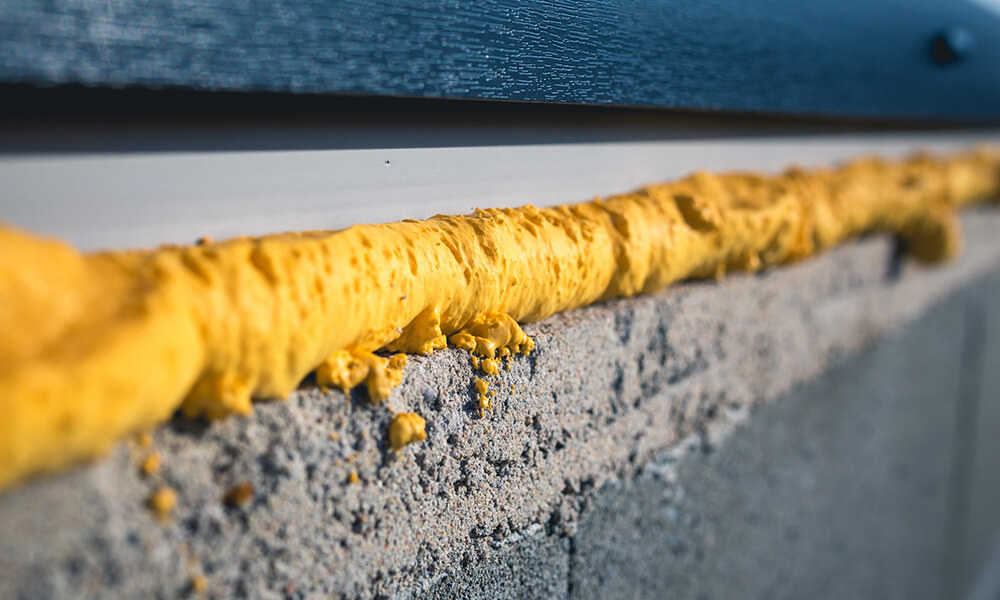Concrete, steel, and even foam can help raise your home and keep your family safe
Long horizontal cracks, leaning or bowing walls, or cracks that are bringing water into your basement are all serious signs your home’s foundation is in trouble. And unlike some home projects, waiting to repair your foundation is never a good idea. There are different methods of foundation repair—some cost more than others, and some have been around for over a hundred years. Here are eight foundation repair methods for you to choose from.
“Foundation repair is a complicated and costly endeavor, so we always get a structural engineer involved from the start,” says Bob Tschudi, Expert Review Board member and North Carolina-based home builder and remodeler. “And remember that a ‘lifetime warranty’ only lasts as long as the foundation company is in business.”
1. Steel Piers
If you were to consult a structural engineer, many would recommend steel piers for stabilizing or repairing a damaged foundation. Steel is particularly effective for reinforcing homes that have begun to settle or slope at an uneven angle.
As a material, steel is incredibly long-lasting (up to 150 years, when you take steps to protect your foundation) and is designed to hold up very heavy structures.
2. Concrete Piers
Placed deep underground, concrete piers are custom-built to match your home’s soil (as soil pressure is often the cause of horizontal cracks) and the foundation’s depth. Like steel piers, you’re giving your home solid support that will last many years.
Concrete is generally considered the best option for warm and mild climates. Because lots of manual labor is required (digging, drilling, dirt removal), the cost of installing concrete foundations can be expensive—between $4 and $25 per square foot.
A local foundation repair contractor can give you an estimate in your area.
3. Helical Piers
Most popular for areas with tricky soil, helical piers use steel that contains helices (helix-shaped designs), allowing the beams to be driven deep into the soil to stabilize your home.
Helical piers offer the same reinforcement benefits as all steel—just be wary of extreme promises that drive the price tag up. Helical piers are newer and often over-marketed, but won’t necessarily outperform any other structures on this list.
4. High-Density Polyurethane Foam

High-density polyurethane foam is great for emergency foundation issues. It’s widely available and rises quickly, which is why it’s often the preferred choice to raise highways, residential concrete, or time-sensitive or undisclosed foundation repairs.
There are more than 10 types of high-density polyurethane foam used for different purposes. For example, RR501 is good for stabilization while FS201 is best for areas of high-moisture (maintaining consistent moisture levels can prevent foundation issues) or water exposure.
5. Segmented Piers
Segmented piers are small, cylindrical tubes of concrete that get pressed into the soil underneath your foundation.
The major advantage to using segmented piers for your foundation repairs is cost. The average foundation repair costs over $4,500, meaning you could save thousands by going with this option.
6. Spot Piers
For light-loaded areas, such as your outdoor porch or attached patio, spot piers can be a great way to repair your foundation. They are installed by hand-digging and inserting concrete, which helps stabilize the vulnerable or damaged areas of your foundation.
Speaking of the digging and inserting in your yard: foundation engineers recommend keeping trees farther away from your home. One tree can absorb as much as 150 gallons of water per day, which could mess with the soil around your foundation.
“Some types of trees have what’s called invasive root systems, and should be avoided completely,” says Tschudi. “Some examples are American elms, willow trees, silver maples, and anything in the willow tree family.”
7. Masonry Patches and Sealants
If your home sits on a concrete foundation already and you’ve noticed some trouble spots, masonry patches and sealants can help reinforce them.
If you’re doing this job yourself, look for vinyl concrete patch products. With strong adhesive properties and drying times of under 24 hours, it’s a solid substance that reinforces your concrete foundation with sturdy materials like vinyl resin and cement.
8. Slab Jacking
Another common fix for concrete foundation repairs is called slab jacking, especially if your concrete is sinking. You may also hear slab jacking referred to as “mud jacking.”
The process is pretty straightforward: Instead of replacing your concrete, a professional drills strategically placed holes in your foundation, then uses small hoses to inject a mixture of grout or foam underneath your foundation, helping it rise in only a couple of hours.
Compared to installing a brand new concrete foundation, you could potentially save thousands and have your home’s foundation fixed much sooner by choosing this option.





